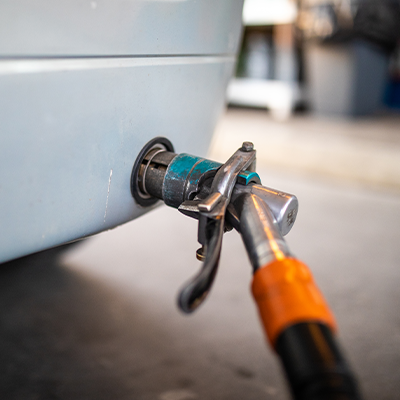- Home
- Services
- Service of cars with LPG fuel system
- LPG vaporizer replacement
LPG vaporizer replacement

The regulator is the most important element of the LPG system. It changes the gas form from liquid to vapour. The whole system depends on it. The main components of the regulator are rubber membranes, which usually wear after some time. If you smell gas inside your car, notice a decrease in the engine power and feel jerking, you should check on the regulator. A frequent symptom of its failure is engine jerking when switching from petrol to gas, or choking when powered by gas.
Tips
- Use only products dedicated for your LPG system
- Adjust the system settings after changing the regulator
Scope of services
- Removing the gas and the cooling system hoses connected to the regulator
- Disconnecting the electricity cables
- Removing the regulator
- Fitting a new regulator in
- Fitting the gas and cooling hoses
- Checking the system for leaks
- Adjusting the LPG system
Find a car workshop
Check out our workshops that offer the service lpg vaporizer replacement in some of the biggest cities in your country
Additional info about the service
The main component of the LPG system is the regulator, whose task is to convert the liquid phase fuel in the tank into a vapour phase fuel delivered to the mixer or the injectors. In order for the LPG phase fuel to be converted into vapour phase it must be heated. To this effect, the regulator is connected to the engine's cooling system. Hot coolant flows through the regulator, heating up the LPG fuel coming from the tank and converting it to vapour. In order to separate the coolant from the LPG fuel in the regulator, rubber membranes are applied, which are also responsible for regulating the amount of the vaporized gas fuel depending on the engine's needs.
With time, the membranes become brittle, stiff and, eventually, unfit for further use. If you try to start your cool LPG engine when it's cold outside without applying petrol, the regulator will freeze, causing the membranes to fail immediately. Low-quality LPG fuel causes the sediments contained in it that the liquid phase filter was unable to block to settle on the regulator membranes. The regulator must be removed in order to be repaired or replaced.
Any repair of the LPG system must be preceded by the closing of the valve by the fuel tank. Next, the fuel hose leading to the regulator must be disconnected, followed by the cooling system hoses and the gas hose leading to the mixer or the injectors. Subsequently, the bolt holding the regulator to the base can be unscrewed and the regulator can be removed from the car. When fitting a new or repaired regulator it is important to seal all joints and change the liquid and vapour phase filter. The last thing to do is adjust the system using a special LPG computer, as a new or repaired regulator will have different parameters.